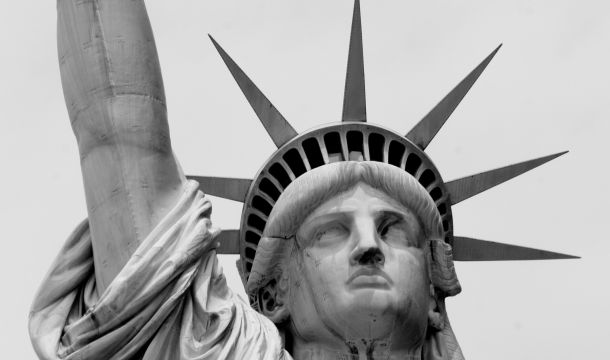New Administration Faces Temporary Injunctions against DEI Termination and Firing of NLRB Member
President Trump on January 20 and 21, 2025, issued Executive Orders 14151 and 14173, seeking to eliminate federal Diversity, Equity and Inclusiveness (DEI) programs and revoking the mandate requiring federal contractors to maintain affirmative action programs under Executive Order (EO) 11246. On February 21, 2025, a federal district court judge in Maryland temporarily halted the executive orders limiting the main DEI programs in the public and private sectors, finding that the potential harm of the orders outweighed the President’s policy priorities. He found the plaintiffs were likely to succeed on their claims that the orders violate the free speech protections of the First Amendment and due process protections of the Fifth Amendment. The judge also refused to limit the injunction geographically or to stay the injunction pending an appeal.
A few weeks later, however, a panel of judges from the U.S. Court of Appeals for the Fourth Circuit granted the Trump Administration a stay of injunction pending the outcome of the appeal. The effect of the ruling is to allow the Administration to currently enforce its orders restricting DEI programs. It should be noted that the two of the three judges on the panel expressed concerns about the attack on DEI without clear definitions or what types of conduct or policies the Administration seeks to ban. One of the judges stated that the constitutionality of the executive order will be dependent on how the government enforces them.
This case does not affect enforcement actions taken by the Equal Employment Opportunity Commission (EEOC), which can challenge race or gender-based DEI programs as discriminatory under Title VII, and state anti-discrimination laws are also not affected. It should be noted that a currently pending ruling by the U.S. Supreme Court involves a case brought by a woman claiming she was passed over for promotions and demoted because she was White and straight. The Supreme Court is expected to ultimately rule that members of a majority group such as White employees should not face a higher burden of proof proving workplace discrimination than minority plaintiffs. In other words, it is expected that the federal anti-discrimination protections will be applied equally to all workers regardless of race, gender, and other protected characteristics. Thus, there is expectation for additional judicial scrutiny of any diversity, equity, and inclusion initiatives that give preferential treatment to racial minorities and women. Further, the Supreme Court ruled a year ago that workers no longer need to show they have suffered a materially significant injury or some other elevated harm in proving an act of discrimination. They need only to demonstrate “some harm” that left them “worse off” at work.
Status of Fired NLRB Member
President Trump on January 28, 2025, fired National Labor Relations Board (NLRB) member Gwynne Wilcox, mostly on the basis that her rulings were partial toward organized labor. Wilcox indicated she planned to seek legal action, and on March 6, 2025, a federal district court judge in D.C. ruled that the firing was illegal under the National Labor Relations Act (NLRA), ordering her immediate reinstatement. The judge later refused to stay her order, but the U.S. Court of Appeals for the District of Columbia Circuit blocked the order while the challenge to the judge’s decision proceeds.
The right of the President to fire heads of “independent” federal agencies is controversial. The NLRB’s authorizing statute allows removal only for cause, but this provision creates significant tension with Article II of the Constitution, which provides that “the executive power shall be vested” with the President, who “shall take care that the laws be faithfully executed.” Independent agencies are designed to be free from political influence, and so the statutes that create them insulate agency heads from accountability to the voters and elected representatives. However, to fit within the Constitutional design, the independent agencies may be subject to the control of the Executive, the President. An old 1935 Supreme Court ruling upheld a limitation on the President’s power to remove members of the Federal Trade Commission (FTC), but it did so on the basis that the FTC at the time did not exercise “executive power.” This exception has been interpreted narrowly, and the Supreme Court later struck down a provision that the President could remove the Consumer Protection Financial Bureau director only for inefficiency, neglect or malfeasance. Currently, the NLRB, and the EEOC, exercise significant executive authority, so the President may have the authority to remove head agency officials as being essential to the execution of the laws. This argument suggests that the President’s power to supervise the Executive Branch depends on his ability to remove officials who don’t follow his policy directives. Thus, while there is “old” Supreme Court precedent supporting the district court judge’s ruling reinstating NLRB Board member Wilcox, there is at least an equal chance that the decision will be reversed on appeal. In the meantime, Board member Wilcox will be reinstated and continue to function as a Board member, thus allowing the Board to now have a quorum of three members and resume normal NLRB activities. On the very first day of her reinstatement, for example, four NLRB decisions were issued, although the cases were not contested. As a result of the reinstatement, there is now a Board majority of two Democrats who will be able to continue the pro-labor tilt exercised during the Biden Administration. However, as the Acting General Counsel now has been appointed by President Trump, the General Counsel may have equal or greater influence on NLRB matters by deciding which cases to prosecute and what positions to take before the NLRB members.
This article is part of our April 2025 Newsletter.
View newsletter online
Download the newsletter as a PDF
Related Content
Get Email Updates

Update of Work Authorization Immigration Status as of October 8, 2025

Workplace Investigations Largely Shut down, but Courts Remain Open during Shutdown for Now

Kirk’s Killing Cautions Employers To Consider Speech Policing

Trump Nominates Appointments to NLRB and EEOC but Policy Changes Likely to Be Delayed

DOL Launches Self-Audit Programs Designed to Help Employers Improve Compliance
